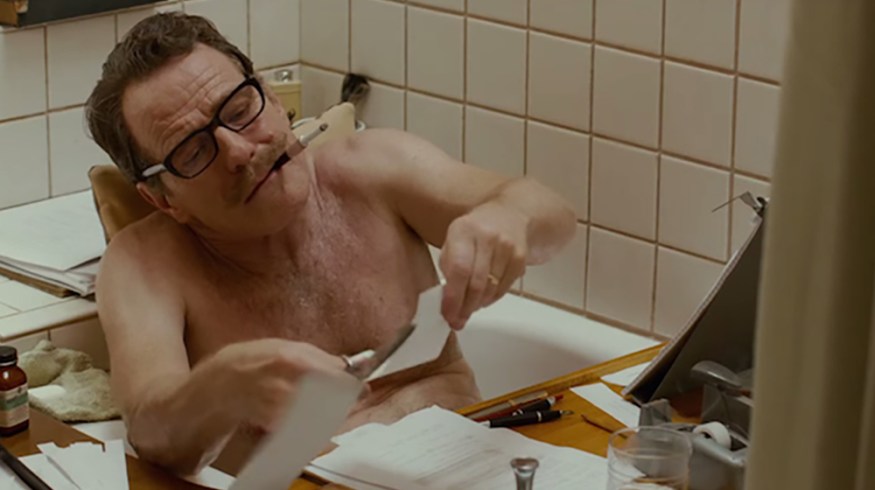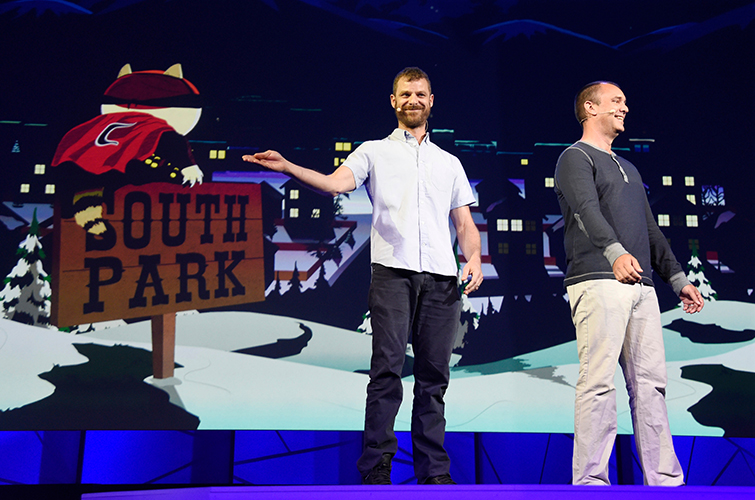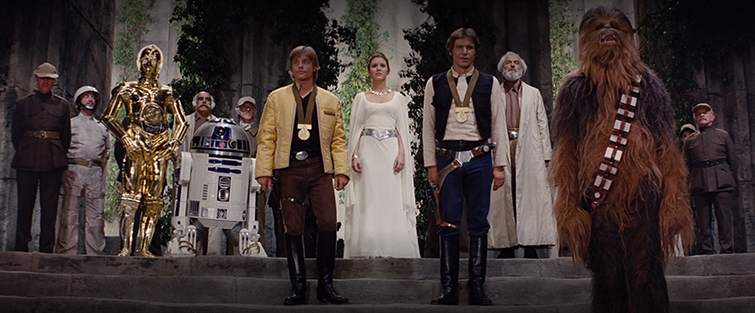
Script School: 3 Writing Tips to Improve Your Short Film
Having trouble writing your script? Here are a few tips to get your creativity flowing so you can discover the path to a great story.
It’s happened to all of us. You’re in the process of writing a short film, but your creativity escapes you. You can’t come up with a beginning, middle, or end — or even the first word of your script. Maybe you’ve thrown away countless finished scripts in the trash because you either hate them or yourself. (Writers tend to be gluttons for self-hate. Maybe it makes us reflective.)
Either way, writer’s block is weighing down on you and making you want to give up entirely. So let’s grab a sledgehammer and start breaking down those blocks. Today, we are going to explore three different techniques you can use for idea generation, script clean-up, and fleshing out your latest story that appeared to you in the shower. Let’s get started!
Number 1: The “100 ideas” Method

Photo by Richard Shotwell/Invision/AP/Shutterstock. Judd Apatow, winner of the award for outstanding documentary or nonfiction special for The Zen Diaries of Garry Shandling, poses in the press room during night two of the Creative Arts Emmy Awards at The Microsoft Theater, in Los Angeles. 09 Sep 2018.
Let’s start off with the basic building blocks of any good story — a good idea.
An idea for a story can either just pop into your head, or it might be the result of a long brainstorming session. Let’s take a lesson from my favorite writer/director, Judd Apatow. Apatow has a method for idea generation that came from his stand-up roots — sit down, get a piece of paper, and write one hundred ideas. These can be as loose or as structured as you want them. It can be an idea for an interesting character, a joke, a premise — just fill the sheet with one hundred things that you can draw from.
My favorite way to fill this sheet out is asking myself “What if?” What if a man was trapped in an airport with no passport or nationality? Or what if your emotions had feelings and personalities? What if a mob boss started going to therapy? What would happen if you killed Keanu Reeves’s dog?

Still via Gorodenkoff.
The important part here is to not stop yourself from writing an idea you may think is silly. Statistically, eighty of them are not going to be your best — but that’s the point of the exercise. It’s breaking apart the self-censoring part of yourself by writing literally anything that comes to mind.
Once you’ve got a hundred ideas on paper, it’s time to look through them and see what sticks out to you. Pick ten ideas and pull them from the sheet. Now, it’s time to write log lines for each. The more you dive into each idea, you will find yourself asking questions about the idea, what you can make of it, and if it seems interesting enough for a story.
Number 2: Replace “And Then” with “Therefore”

Photo by Chris Pizzello/Invision/AP/Shutterstock. South Park creators Matt Stone, left, and Trey Parker discuss the South Park: The Fractured But Whole video game onstage at Ubisoft’s E3 2015 Conference at the Orpheum Theatre, in Los Angeles. 15 Jun 2015.
So you’ve cherry-picked your idea out of your list of one hundred. There’s bound to be one in there you are ready to get started on. When you begin your outline, there’s a little secret that you can employ that Trey Parker and Matt Stone, the creators of South Park, use for creating a unified, intricate story line. When you’re going through the beats of your script, your instinct is to say . . .
“A happens, and then B, happens, and then C happens.”
The more you use “and,” the more the beats of your film become separated. If you truly want a flow from your first minute to your last, force yourself to use the words Therefore and But between every beat.
“A happens, therefore B happens, but C happens, therefore D happens…”
It enhances escalation, and it forces you to get to your final destination with some twists and turns.
Let’s use a movie to explain this correctly. We’ll go with Star Wars: A New Hope.
The rebel alliance has acquired the plans to a giant planet-destroying base called the Death Star; therefore the Empire boards their ship to capture Princess Leia. But, Leia hides the Death Star plans inside of a droid; therefore the plans are safe. But, Jawas capture the droids and sell them to farmers. Therefore, Luke Skywalker discovers the message and meets Ben Kenobi, who reveals himself to be Obi-wan, who knows Leia. Therefore, Luke and Obi-wan begin their journey to Alderaan. But they don’t have a ship; therefore, Han Solo, but Death Star capture and planet destruction; therefore Leia rescue mission, but lightsaber attack; therefore escape plan, but Death Star bad; therefore Rebel Alliance suicide mission, but Vader ship battle; therefore Death Star go boom. Therefore, medals. Curtains.
Okay, that’s an oversimplification. But, it’s really a great way to make your story a path, and not a series of jumps. Stories need to flow and have reason. The more that each scene influences the one that follows, the closer to life the story becomes.
Number 3: Start at the End

Still via Vitaliipixels.
You know when you’re writing a paper for school or something, the hardest thing to write is the introductory paragraph? It’s because you are trying to introduce something that you haven’t written yet. If you’re having a tough time starting from the beginning of your idea, one of the best ways to start your story is to begin with the ending. It’s like taking Chekov’s gun and working backward to hide it in plain sight.
Take your idea, and think of the best way for it to end spectacularly — whether it’s a giant gunfight, someone finally getting the girl, or the devil getting sent back to hell after an epic rock challenge. From your ending, you can work backward to find the outline and beats of your story. Since you know how the story ends, you can carve an extremely interesting way to get there that will spice up the story and add depth to your characters. It’s what all the great mystery writers use, so why not employ it for your story?
So if you’ve been stuck in the mud for quite a while trying to get pry your story out of your brain, hopefully these techniques can help drag that idea that you know is in there and help form it into a great script for your project. Cause if you do it right, one day, it’s just going to click.
Cover image via Trumbo (Bleecker Street Productions.)
Interested in the tracks we used to make this video?
- “Healing Pyramid” by Tom Deis
- “Lo Fi Beach Dawn” by Trending Music
- “Urban Traffic Hip Hop” by Trending Music
- “Boom Bap Hip Hop” by Trending Music
- “Space Battle” by Vinny Falcone
- “Sunny Hip Hop” by Trending Music
Want more on screenwriting? Check out these articles.
- Pre-Production Tips: The Basics of Breaking Down a Script
- A Guide to Structuring Your Scripts and Screenplays
- Free Script Writing Software Options for the Low-Budget Filmmaker
- Pre-Production Tips: How and Why to Break Down a Script
- Industry Insights: The Ins and Outs of Working as a Script Supervisor








